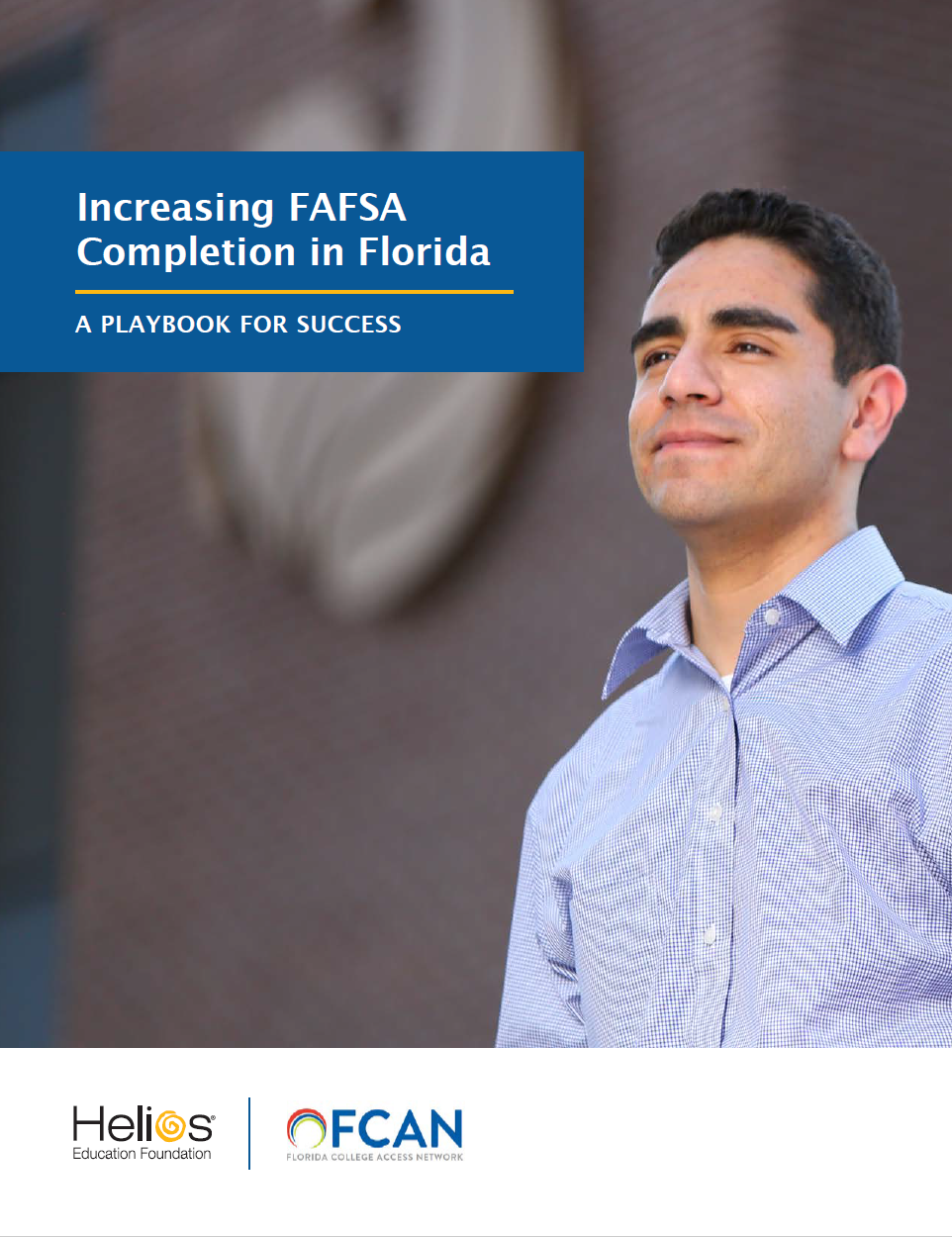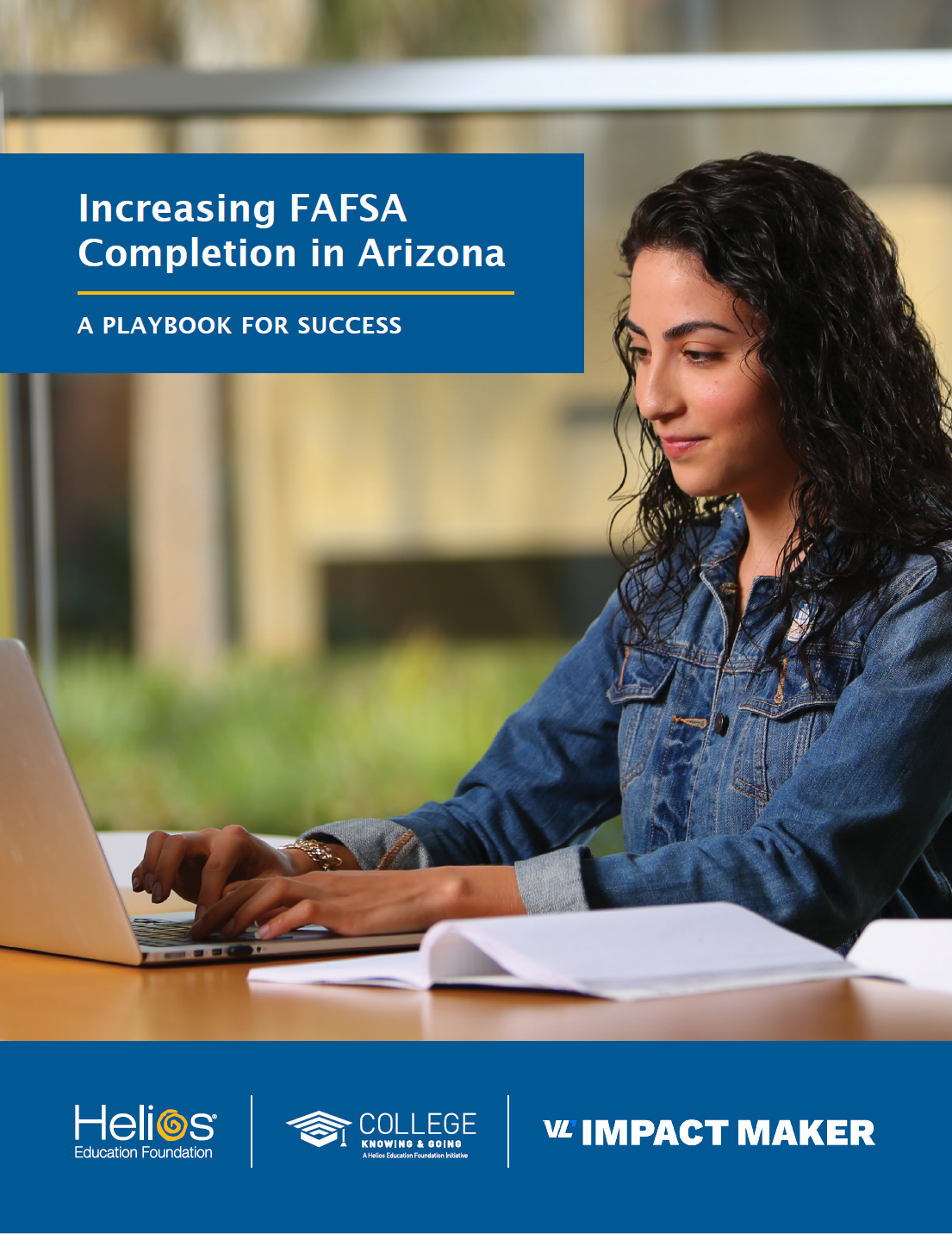Financial aid starts with the Free Application for Federal Student Aid (FAFSA)
Helios and partners share FAFSA toolkits for Arizona and Florida
Students face numerous challenges along the path toward completion of a postsecondary degree. Often, the most significant challenge is the increasing cost of higher education. Yet, annually, thousands of dollars intended to aid students, in the form of scholarships, grants, and federally-backed loans, remain unclaimed. The answer to closing the gap between student need and federal aid starts by completing the Free Application for Federal Student Aid, commonly referred to as the FAFSA.
“Completion of the FAFSA is the first step toward securing financial options that make a postsecondary degree more affordable and attainable,” said Dr. Paul Perrault, Senior Vice President, Community Impact and Learning, Helios Education Foundation.
Increasing FAFSA Completion in Florida: A Playbook for Success is a toolkit for FL educators, community leaders, parents, and students to navigate the complexity of the FAFSA. Together, researchers from Helios Education Foundation and the Florida College Access Network compiled resources and best practices intended to assist in the accurate and timely completion of the FAFSA.
Explore the Florida playbookIncreasing FAFSA Completion in Arizona: A Playbook for Success is a toolkit to help AZ communities, regions, neighborhoods, districts and schools increase postsecondary access. This playbook was created in partnership with Valley Leadership to provide valuable information and resources supporting FAFSA completion in Arizona.
Explore the Arizona playbookGuided by the belief that education changes lives and strengthens communities, Helios Education Foundation invests in the potential of all students, particularly first-generation, low-income, and underrepresented students. Connecting a student’s potential to unexplored opportunity starts by nurturing individual ability, fueling ability with encouragement, and understanding that every student has within him or her limitless possibilities made possible through the transformative power of education.



